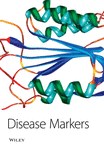Association of Hypoadiponectinemia with Hypoglutathionemia in NAFLD Subjects with and without Type 2 Diabetes
Abstract
Objective: The aim of this study is to measure the extent of oxidative stress and to see whether it has any correlation to changes in adiponectin levels in NAFLD subjects with and without Type 2 diabetes.
Methods: Subjects recruited from the Chennai Urban Rural Epidemiology Study comprise of 1: Normal Glucose Tolerance (NGT) subjects without NAFLD; 2: NGT with NAFLD; 3: Type 2 Diabetic patients [T2DM] without NAFLD and 4: T2DM with NAFLD. Thiobarbituric acid reactive substances (TBARS), protein carbonyl (PCO), glutathione and adiponectin levels were measured by standard methods. Ultrasound of the liver was used to diagnose NAFLD.
Results: T2DM subjects with NAFLD had significantly (p < 0.001) higher levels of thiobarbituric acid reactive substances (TBARS) and protein carbonyls (PCO) but lower (p < 0.001) GSH/GSSG ratio and adiponectin levels compared to other three groups. The association of hypoadiponectinemia withNAFLD/Type 2 diabetes was significant even after adjusting for age, gender and BMI, but lost when adjusted for parameters of oxidative stress. While palmitate significantly reduced GSH/GSSG ratio in hepatocytes, addition of exogenous recombinant adiponectin restored the GSH/GSSG ratio comparable to those of untreated cells.
Conclusion: There exists an association of hypoglutathionemia and hypoadiponectinemia in subjects with NAFLD and/or T2DM. In addition to the known beneficial effects, out study also exposes the antioxidant nature of adiponectin.




